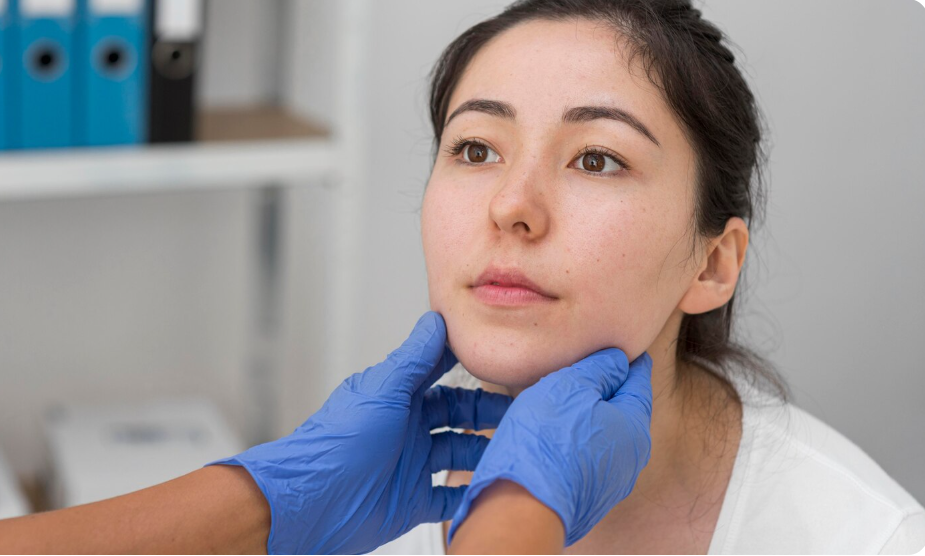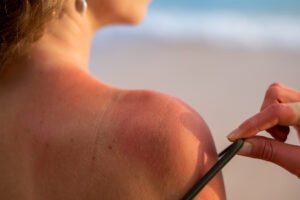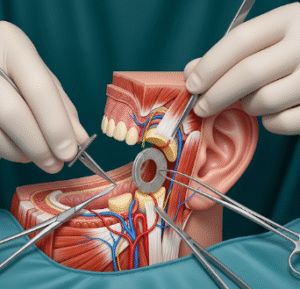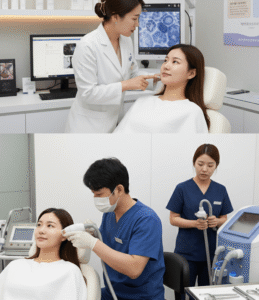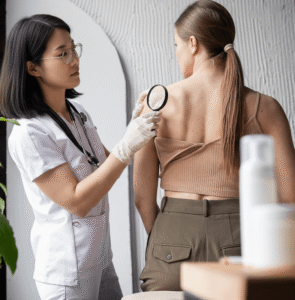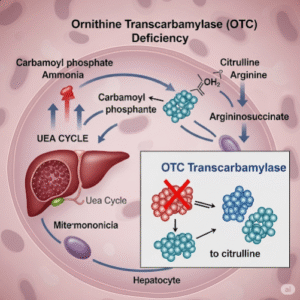What It Is
A Mohs defect local flap is a reconstructive surgical technique used to repair skin defects left after Mohs micrographic surgery for skin cancer. Mohs surgery removes cancerous tissue with minimal margin but can leave wounds of various sizes and shapes, especially on cosmetically sensitive areas like the face, nose, lips, and eyelids.
A local flap reconstruction involves rearranging adjacent healthy skin and tissue to cover the defect while preserving natural appearance, contour, and function. In Korea, surgeons specialize in advanced rotation, advancement, and transposition flap techniques to restore seamless results with minimal visible scarring.
Why It’s Done
Patients undergo Mohs defect local flap reconstruction because:
- Direct closure is not possible due to wound size or location.
- They want the most natural-looking repair in cosmetically sensitive areas.
- Flap reconstruction maintains color, texture, and thickness match with surrounding skin.
- It reduces functional complications in areas like the nose, eyelids, and lips.
Good candidates include:
- Patients who have undergone Mohs surgery for skin cancer.
- Those with moderate to large facial defects.
- Individuals in good health and with realistic expectations.
Alternatives
- Primary closure: Direct suturing for very small wounds.
- Skin grafts: Suitable for some areas but often less natural in color/texture match.
- Secondary intention healing: Allowing wound to heal naturally, best for small concave areas but slower and less predictable.
- Free flap reconstruction: For very large or complex defects.
Preparation
Before Mohs defect local flap surgery in Korea, patients will:
- Undergo consultation and wound evaluation after Mohs surgery.
- Have medical history and imaging (if deeper structures are affected).
- Stop smoking and alcohol 2–4 weeks prior to surgery.
- Avoid blood-thinning medications and supplements.
How It’s Done
- Anesthesia: Local anesthesia with sedation or general anesthesia depending on defect size and location.
- Design: The surgeon plans flap orientation to align with natural skin folds and lines.
- Flap elevation: Healthy skin and tissue near the defect are mobilized.
- Transfer: The flap is rotated, advanced, or transposed into the wound.
- Closure: Fine sutures are used to minimize scarring.
- Duration: 1–3 hours, outpatient or short hospital stay.
Recovery
- First week: Swelling, bruising, and mild discomfort are common.
- Stitches: Typically removed in 5–7 days for face, 10–14 days for other areas.
- Return to activities: Light duties in a few days; strenuous activity avoided for 2–4 weeks.
- Final results: Scars fade over 3–12 months, blending naturally with surrounding skin.
Possible Complications
- Partial flap loss or necrosis.
- Infection or delayed wound healing.
- Visible scarring or asymmetry.
- Numbness or altered sensation in the area.
- Rare risks: hematoma or contour irregularities.
Treatment Options in Korea
Diagnosis
Korean surgeons use clinical examination, dermatoscopy, and photography to evaluate defect size and location for flap planning.
Medical Treatments
- Topical scar gels or silicone sheets for early scar management.
- Non-surgical options like laser therapy for minor irregularities.
Surgical or Advanced Therapies
- Advancement flap: Tissue moved directly forward into defect.
- Rotation flap: Tissue rotated into place for curved defects.
- Transposition flap: Tissue shifted over adjacent skin.
- Combination with cartilage or fat grafting if deeper reconstruction is required.
Rehabilitation and Support
- Scar management with silicone gels, microneedling, or fractional laser.
- Long-term follow-up to monitor both cancer recurrence and aesthetic outcomes.
- Psychological support for patients adjusting after skin cancer treatment.
- International patients benefit from Korea’s expertise in Mohs reconstruction, refined flap design, and advanced scar care.

